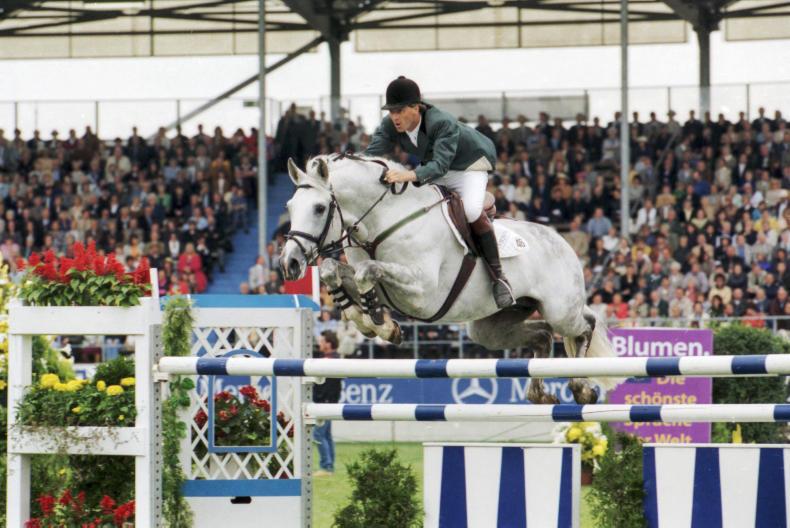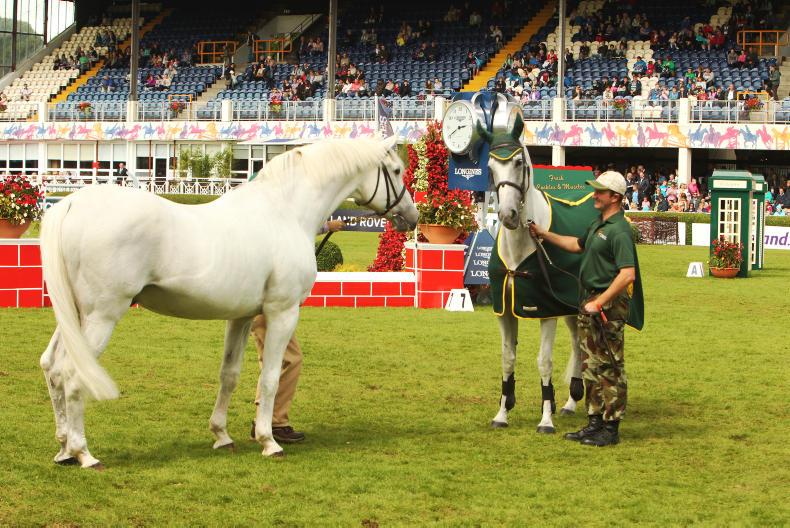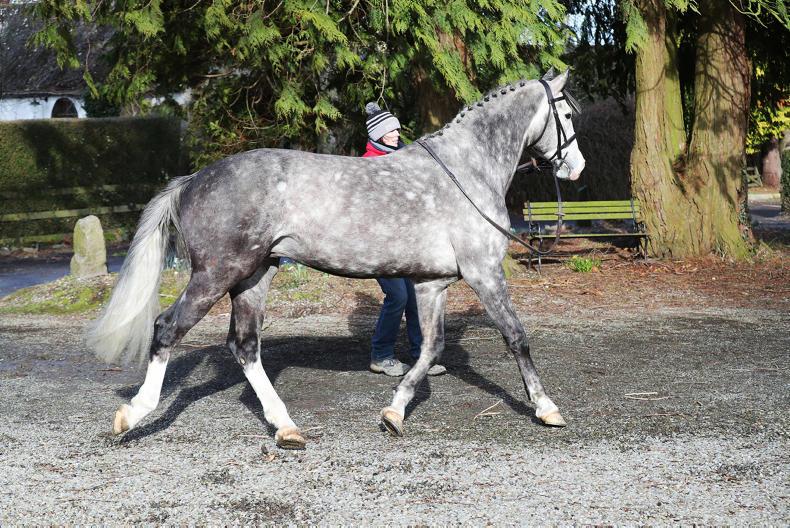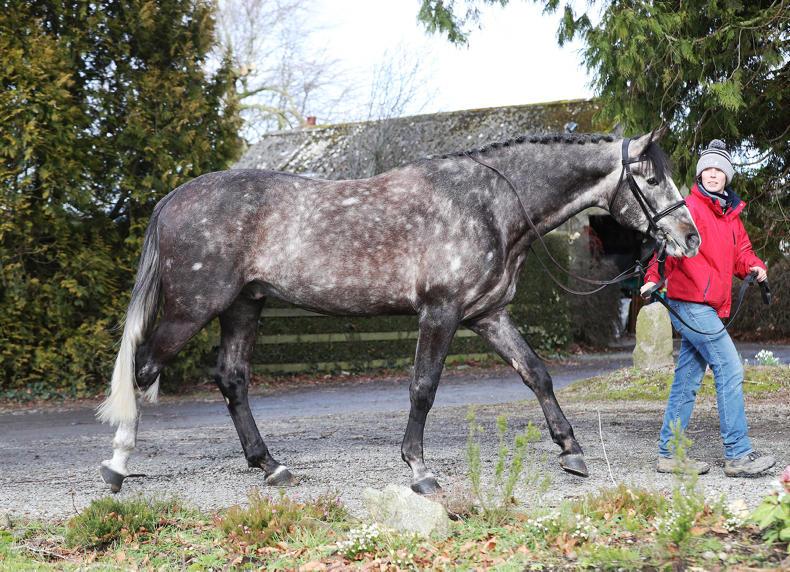
LOYALTY CODE:
The paper code cannot be redeemed when browsing in private/incognito mode. Please go to a normal browser window and enter the code there

LOYALTY CODE:
The paper code cannot be redeemed when browsing in private/incognito mode. Please go to a normal browser window and enter the code there
This content is copyright protected!
However, if you would like to share the information in this article, you may use the headline, summary and link below:
Title: 2018 BREEDING ADVICE: Brave breeding
Leanne O'Sullivan talks to Mary McCann of Hartwell Stud about how the Cruising clones are getting on in their jumping and stud careers
https://www.farmersjournal.ie/2018-breeding-advice-brave-breeding-353993

ENTER YOUR LOYALTY CODE:
The reader loyalty code gives you full access to the site from when you enter it until the following Wednesday at 9pm. Find your unique code on the back page of Irish Country Living every week.

CODE ACCEPTED

You have full access to farmersjournal.ie on this browser until 9pm next Wednesday. Thank you for buying the paper and using the code.

CODE NOT VALID
Please try again or contact us.
For assistance, call 01 4199525
or email subs@farmersjournal.ie
Sign in

Incorrect details
Please try again or reset password
If would like to speak to a member of
our team, please call us on 01-4199525
Reset
password
Please enter your email address and we
will send you a link to reset your password

If would like to speak to a member of
our team, please call us on 01-4199525
Link sent to
your email
address
![]()
We have sent an email to your address.
Please click on the link in this email to reset
your password. If you can't find it in your inbox,
please check your spam folder. If you can't
find the email, please call us on 01-4199525.
![]()
Email address
not recognised
There is no subscription associated with this email
address. To read our subscriber-only content.
please subscribe or use the reader loyalty code.
If would like to speak to a member of
our team, please call us on 01-4199525
 This is a subscriber-only article
This is a subscriber-only article
Update Success !








On Sunday, 7 September 2014, the famous Irish Sport Horse stallion Cruising passed away peacefully at the age of 29, in the stable he was born in at Hartwell Stud in Kill, Co Kildare.
Cruising was celebrated and remembered by his many fans for his long and outstanding international show jumping career. Ridden by Trevor Coyle, Cruising won Grand Prix classes in Aachen, Dortmund and Lucerne, to name just a few. He was also a prolific Irish team horse and was on winning Nations Cup teams at Dublin, Rotterdam, Calgary, Aachen and Modena throughout the course of his glittering career.
But what set Cruising apart was his ability to sire champion progeny that have achieved some of the highest accolades in elite equestrian sport. Cruising is the only stallion in Ireland to have a five-star rating for his own show jumping performance and the performance of his offspring in both eventing and show jumping.
Cruising was by the Irish Draught stallion Sea Crest, a Grade A show jumper, and was out of Mullacrew (ISH), an international show jumper by the sire Nordlys (TB), and was considered one of the world’s most significant sires of the 21st century.
 Coyle Trevor and Cruising on their way to winning the Grand Prix at Aachen in 1999 (Credit: Dirk Caremans)
Coyle Trevor and Cruising on their way to winning the Grand Prix at Aachen in 1999 (Credit: Dirk Caremans)
Trevor Coyle and Cruising on their way to winning the Grand Prix at Aachen in 1999 (Credit: Dirk Caremans)
TRAIL BLAZING
Mary McCann and her family have been breeding sport horses at Hartwell Stud for 48 years.
They have always been progressive in terms of breeding, with Hartwell Stud becoming the first stud in Ireland to be approved by the Department of Agriculture for the collection and export of frozen and chilled semen and embryo transfers.
Looking back on it now, Mary says: “When we started collecting semen for artificial insemination (AI) everyone thought it was mad – now it’s the way to go.” But in 2011 the McCanns took the use of advanced reproductive techniques to a whole new level, when they set out to clone Cruising. Cloning in sport horse breeding at this time was not unheard of – the first horse was cloned in Italy in 2003 – but it was as Mary describes, “a little bit away for some people”.
Scientists say that cloning allows the return of proven genetics to a breeding programme and allows breeders to expand the genetic impact of an outstanding proven sire or broodmare, which is exactly why Mary decided to follow through.
 RDS Dublin Horse Show 2014 PAY PER PIC Retirement of Mo Chroí -Meets Cruising Shot 2 of 2 Donal O’Beirne/Hoofprints
RDS Dublin Horse Show 2014 PAY PER PIC Retirement of Mo Chroí -Meets Cruising Shot 2 of 2 Donal O’Beirne/Hoofprints
The famous 17-year-old Irish Sport Horse mare Mo Chroi meets her sire, Cruising, after winning her final competition before retirement at the 2014 Dublin Horse Show
“What I did it [cloning] for was the fact that we are losing the valuable genetics of the traditional Irish horse. My whole reasoning for going through with this was to be able to continue using Cruising’s genetics to breed mares with proven performance pedigree that we could cross again with top stallions,” Mary states.
“If you go back just a couple of years, the horses who were big winners were all out of a Cruising mare. They might have all been by different sires, but they all had Cruising dam lines. But they are dying out now which is a pity and that’s my hope that through the clones we can get more well-bred Cruising mares back again to breed from.
“The top competitors and breeders will still buy up any Cruising mare that they can find, even if they’re aged. The last generation of Cruising mares bred by fresh semen are 12-year-olds,” adds Mary.
In June and July 2012, Cruising Encore and Cruising Arish, Cruising’s clones, were born respectively and in 2014 Mary McCann and Hartwell Stud were recognised for their outstanding contribution to breeding and received an award from Horse Sport Ireland.
If we weren’t in Ireland we wouldn’t even be bothered jumping Cruising Arish and Cruising Encore at all because people would understand that whether they jump or not has no influence on their genetic make-up and their ability to breed future top performers
FRUSTRATION
Overleaf (page 26), veterinary surgeon Valerie Dromey writes: “[It is] unlikely that the cloned offspring will perform at the same level as the donor animal.” However, she goes on to say that: “The strength of cloning as a clinical procedure is in the progeny of the clone. The cloned animal’s progeny should not differ from progeny of the original animal.”
In Mary’s opinion many Irish breeders don’t seem to accept this: “People are waiting for Cruising, the international show jumper, to appear on the scene again before they will get behind breeding from the clones. But that’s not going to happen.
“If we weren’t in Ireland we wouldn’t even be bothered jumping Cruising Arish and Cruising Encore at all because people would understand that whether they jump or not has no influence on their genetic make-up and their ability to breed future top performers.
“There are very few stallions that have been cloned, a lot have been geldings. These geldings have proven their jumping capabilities, but they haven’t proven themselves as a sire of performers and some stallions don’t stamp their young stock.
“There are plenty of stallions that have been fantastic performers but they haven’t passed those performance traits on. Cruising has proven himself as a sire of performers.
 Cruising Encore and Alexander Butler in action at the Irish Breeders Classic Show at Barnadown last year, where they jumped clear in the 1.20m class (2017)
Cruising Encore and Alexander Butler in action at the Irish Breeders Classic Show at Barnadown last year, where they jumped clear in the 1.20m class (2017)
Cruising Encore and Alexander Butler in action at the Irish Breeders Classic Show at Barnadown last year, where they jumped clear in the 1.20m class
“In reality though, if they [the Cruising clones] jump more Irish breeders will come to use them. We noticed more interest in Cruising Encore toward the end of last year because Encore jumped a number of clears at 1.20m level with Alexander Butler.
“Cruising Arish injured himself in the stable and is still recovering, so we will have to wait and see with him. Alexander is gone abroad competing until the beginning of April, so for now we will just keep Encore ticking over.
“Alexander was very happy with how he [Cruising Encore] jumped today, after having a break from jumping since before Christmas, and he is confident that he’d have him back to where he was at the end of last season very quickly.
POSITIVE FEEDBACK
 Cruising Arish and Gina McCann (Photo: Caroline Norris)
Cruising Arish and Gina McCann (Photo: Caroline Norris)
Cruising Arish and Gina McCann (Credit: Caroline Norris)
Cruising Arish has 25 registered offspring to date, of which 17 (68%) are traditionally bred. Cruising Encore has eight registered offspring to date, of which three are traditionally bred.
“It’s still too soon to say whether it has all been worth it,” Mary says. “I just hope that on the merit of Cruising’s genetics people will start to use them a bit more.”
The McCanns have covered a number of their own mares with the Cruising clones over the past three years and of those they have only retained three fillies. Two, two-year-olds by Arish and a yearling by Encore.
“We’ve sold nearly all of the stock that we bred from the clones,” confirmed Mary. “They are around the country waiting to appear on the scene, so hopefully next year there might be some three-year-olds. We’ve jumped our own two-year-olds by Arish and they have been very good. We’ve mostly bred the clones with traditional Irish mares and a lot of them have Clover Hill blood in them, because that was Cruising’s best cross.
“A lot of the people who have bred good Cruisings came back again, and the people who have bred from the clones have been very positive about them. Although, I did think we would have a lot more coming to them. But a young stallion their age would have much fewer mares visiting them than they have had, so that’s positive.
CHALLENGES AND HOPE
 Cruising Encore and Gina McCann (Photo: Caroline Norris)
Cruising Encore and Gina McCann (Photo: Caroline Norris)
Cruising Encore and Gina McCann (Credit: Caroline Norris)
“We have had breeders who were interested in cloning their horses approach us for information and advice, some have since gone through the process – unfortunately they haven’t been successful. But breeders do need to take a look into what they’ve already spent on the animal before justifying an expensive procedure like embryo transfer or cloning.
“A mare jumping 1.40m is likely to be about eight years of age. At this point you’ve spent in the region of €25k. Who has that kind of money and can then afford to spend more to do embryo transfer or cloning? To take the mare’s full-sister and do it on her instead is an option, but then it’s hard to get the recognition for that mare because she hasn’t jumped herself.
“I don’t think there’s enough being done for breeders. It’s even harder for people to bring on a young stallion – it forces people out. For us to keep going with these horses we have to sell our foals. We might only keep a good filly.
“There should be something there to bring on well-bred young stallions. I think a lot of them are being lost out of the country and that’s all contributing to the problem that we have here – that there are very few proven Irish stallions that breeders are willing to use on their mares.
“Records of what has been bred in Ireland and gone abroad is another big issue, so you can’t prove progeny performance. You can’t find the offspring, there’s no record. I think we are the most difficult country in the world to try and organise ourselves – we don’t have a very good community feel, we don’t all work together on a common goal. Breeders need to come together. I think there is hope though if Indecon is followed through on.”
SHARING OPTIONS: